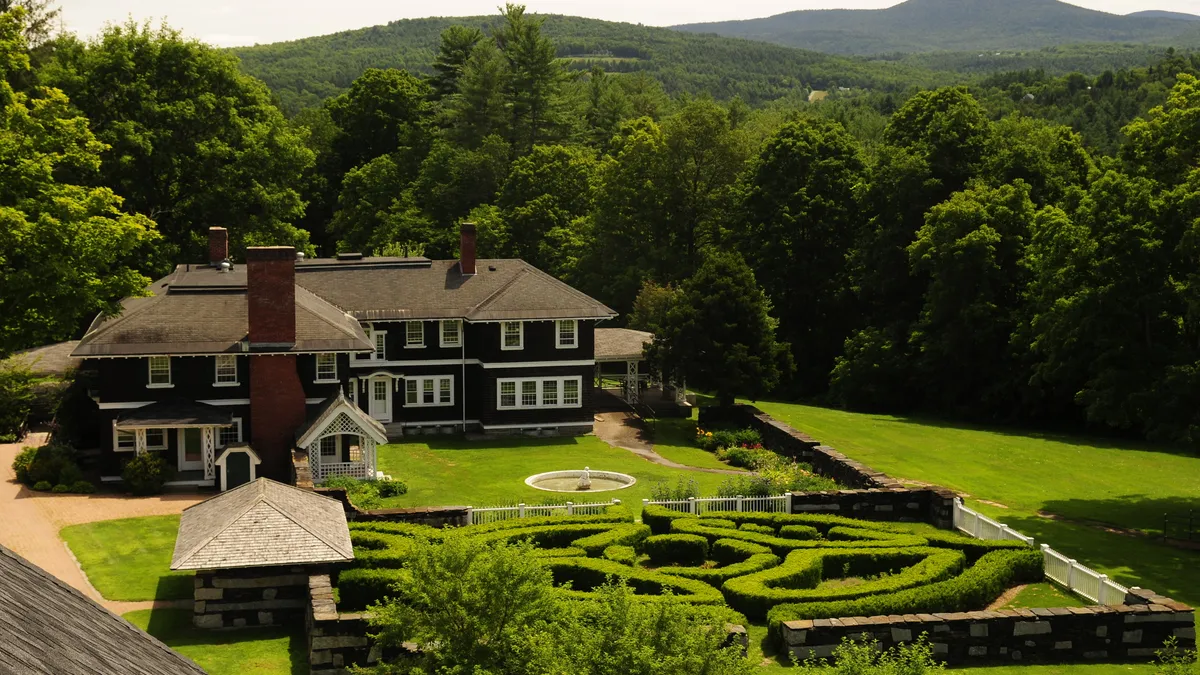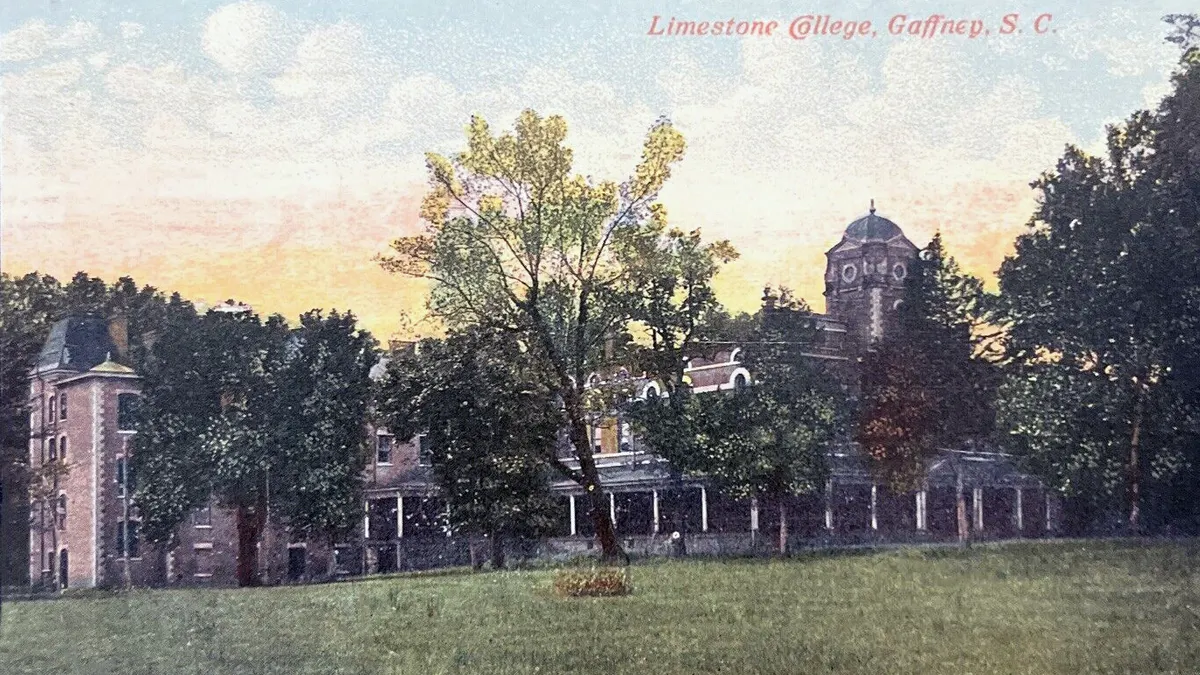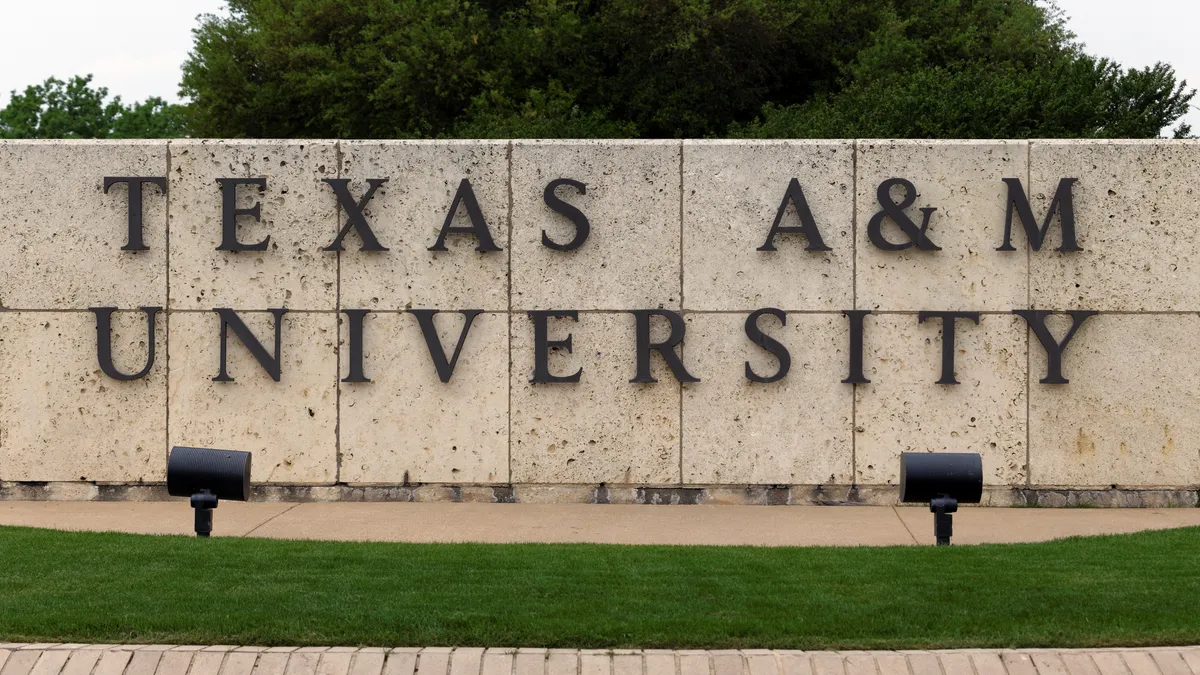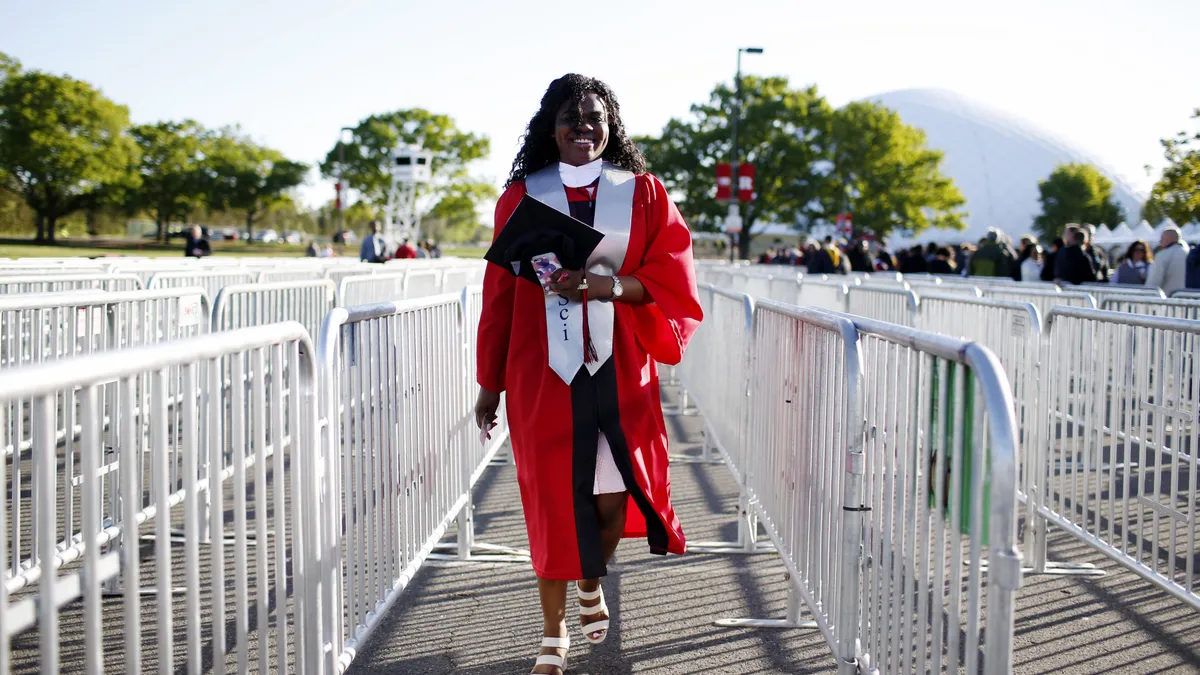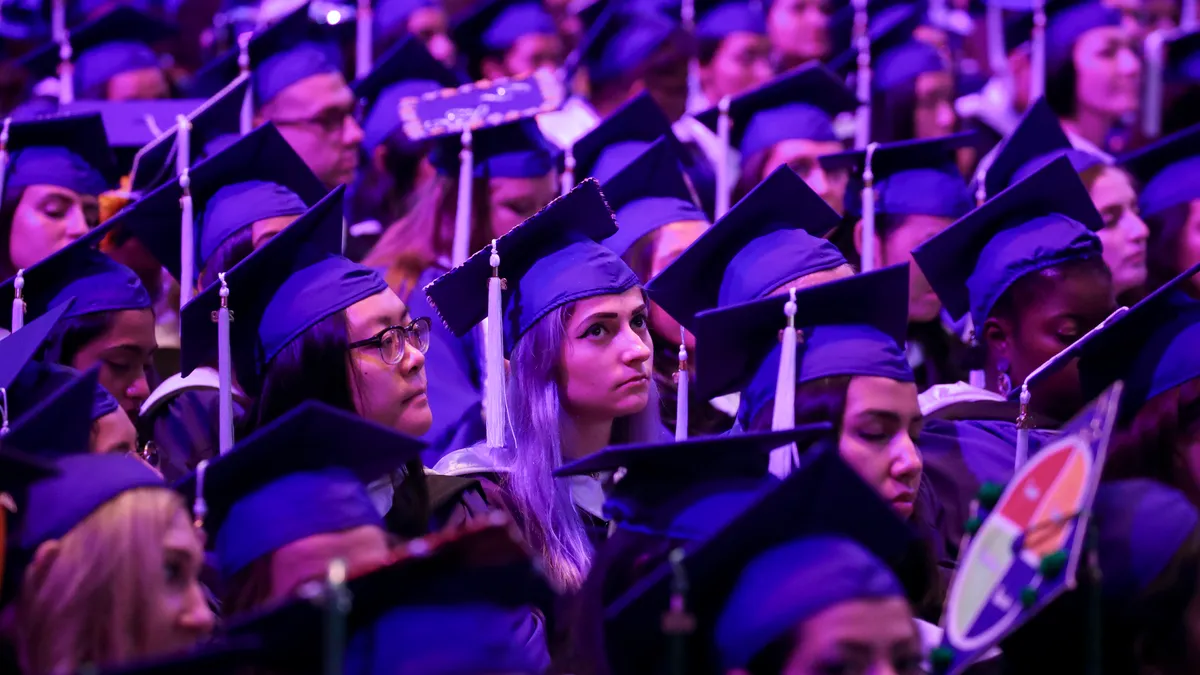Longtime education faculty member Diana Waters found out from a student that Goddard College was closing.
When Waters heard this, in April, she told the student: “No, no, no — you’re mistaken. They’re closing the campus, not the college.”
Earlier this year, the Vermont college’s board told faculty that the financially struggling college — which contemplated pivoting to online-only instruction — would close its campus, a move officials said then would be temporary.
Hence why Waters, who has worked at the college for almost three decades, thought the student had conflated the closure of the physical campus with that of the entire 86-year-old institution.
But after reassuring the student that the college itself was safe, Waters’ phone started blowing up with calls.
“I put them on hold, and I looked at my email. As I was looking at my email, the announcement to faculty popped up,” she said.
Goddard — the college itself — was folding at the end of its current semester.
Waters was far from alone in her surprise at the abruptness of the April 9 announcement. Maike Garland, a nearly 30-year faculty member in the education program and a Goddard alumna, first learned of the closure through an email notice sent to alumni.
When she saw it, she thought, “This must be a mistake.” But then came Goddard’s official announcement confirming the news.
Like Waters, Garland had anticipated a closure of the physical campus. On-campus faculty and staff had been told to vacate their offices in March, and by April a locksmith was on campus to change the locks, Garland said. But there was not a hint that the institution would close entirely and permanently.
“There was no heads up,” Garland said.
Leading up to the announcement were years of leadership turnover, falling enrollment and deep tensions between administration and rank and file. Since April 9, faculty and students have scrambled to get more information and wind down their careers, responsibilities and studies at Goddard in its final days.
‘Students were panicking’
The institution’s final spring cohort of students had enrolled just days before the announcement, according to Otto Muller, a faculty member at Goddard since 2008.
“We were in the middle of figuring out people's curriculum for the semester,” Muller said. “Not only were we given no advance warning, but they didn't even think to reach out to faculty that were actively setting up semester plans with students to check in about what we should tell students.”
Up even until the day before the closure announcement, Garland said, the admissions office had asked her to evaluate prospective students.
“It seemed absurd,” she said.
Even after the announcement came, information from officials remained scant.
“Students were panicking,” Waters said. “They didn't know what to do, and nothing came out telling them what to do. It just said: More information will be revealed.”
What faculty wanted and needed were the details of how the college would close — the process.
“I have struggled to get clarity for the sake of my students,” Garland said.
In the absence of information, Muller said faculty had to reach out to their dean and college provost to essentially demand a meeting.
Even by mid-May, the college’s president, Dan Hocoy, hadn’t communicated directly with faculty about the shuttering, Muller and other faculty noted. “Which is messed up,” Muller said, “to close that institution and to not even speak to its community.”
Hocoy did not respond to multiple requests since April for an interview or comment by email, LinkedIn and phone. Goddard’s board chair, Mark Jones, also did not respond to multiple requests for interviews.
Among other things, faculty were scrambling to get details of Goddard’s teach-out agreement with Prescott College, in Arizona. The deal was noted in the public closure announcement, but the release was short on details. And those specifics weren’t coming out in other channels either, according to faculty Higher Ed Dive spoke with.
“The few administrators that are left on campus are doing their best to put together the details of a teach-out plan,” Garland said in early May. “It's not together yet. But they are doing their best under these conditions.”
What closure plan was in place at the time contained aspects that Garland “strongly disagreed with,” she said. She pointed in particular to the suspension of program extensions offered as accommodations to comply with American with Disabilities Act rules. She knew of students who had planned to use extensions to finish theses.
By mid-May, mixed messages and lack of clarity still abounded around whether certain Goddard programs — including its interdisciplinary master’s of fine arts and bachelor’s of fine arts in socially engaged art — would have parallel programs at a teach-out institution, Muller said.
Even for programs that are offered at Prescott, the two colleges aren’t twins.
“I want my students to land well, I am working hard to find alternative places for them. That's my concern right now,” said Garland, who teaches in Goddard’s education program. “Prescott doesn't work for all of them, because their approach to teacher education is different than ours.”
At the same time, faculty also have had to figure out their next career moves, with severance from Goddard appearing to range from scant to nonexistent, according to those Higher Ed Dive spoke with.
Waters and Garland, for example, each said they are nearing the end of their careers, but they still plan to work following Goddard’s closure. Garland said she will get eight weeks of severance. And she’s concerned about what comes next. “It's hard to imagine starting a new career at my age,” she said.
Waters is looking to do consulting work after the college closes. Because her faculty status changed to the equivalent of an adjunct during a broader restructuring some years ago, she will get no severance.
“I feel like a 10-year-old because all I can think is, ‘It's not fair, it’s not fair,’” she said.
‘A funny little college in Vermont’
Goddard may well be unique among colleges in the U.S.
Originally a seminary, its modern incarnation began in 1938 on what had been a sheep farm in Plainfield, Vermont.
Goddard was conceived as a democratic educational experiment in “plain living and hard thinking,” according to its website. The higher education journal Change described it in 1971 as “perhaps the quintessential innovative college in the United States.”
Its founder and first president, Tim Pitkin, expressed that education and students’ lives outside of a learning institution couldn't or shouldn't be siloed from each other. As its original course catalog from 1938 noted, the college sought to integrate education with the community, with all the “consequential breaking down of the barriers that separate school from real life” that would follow.
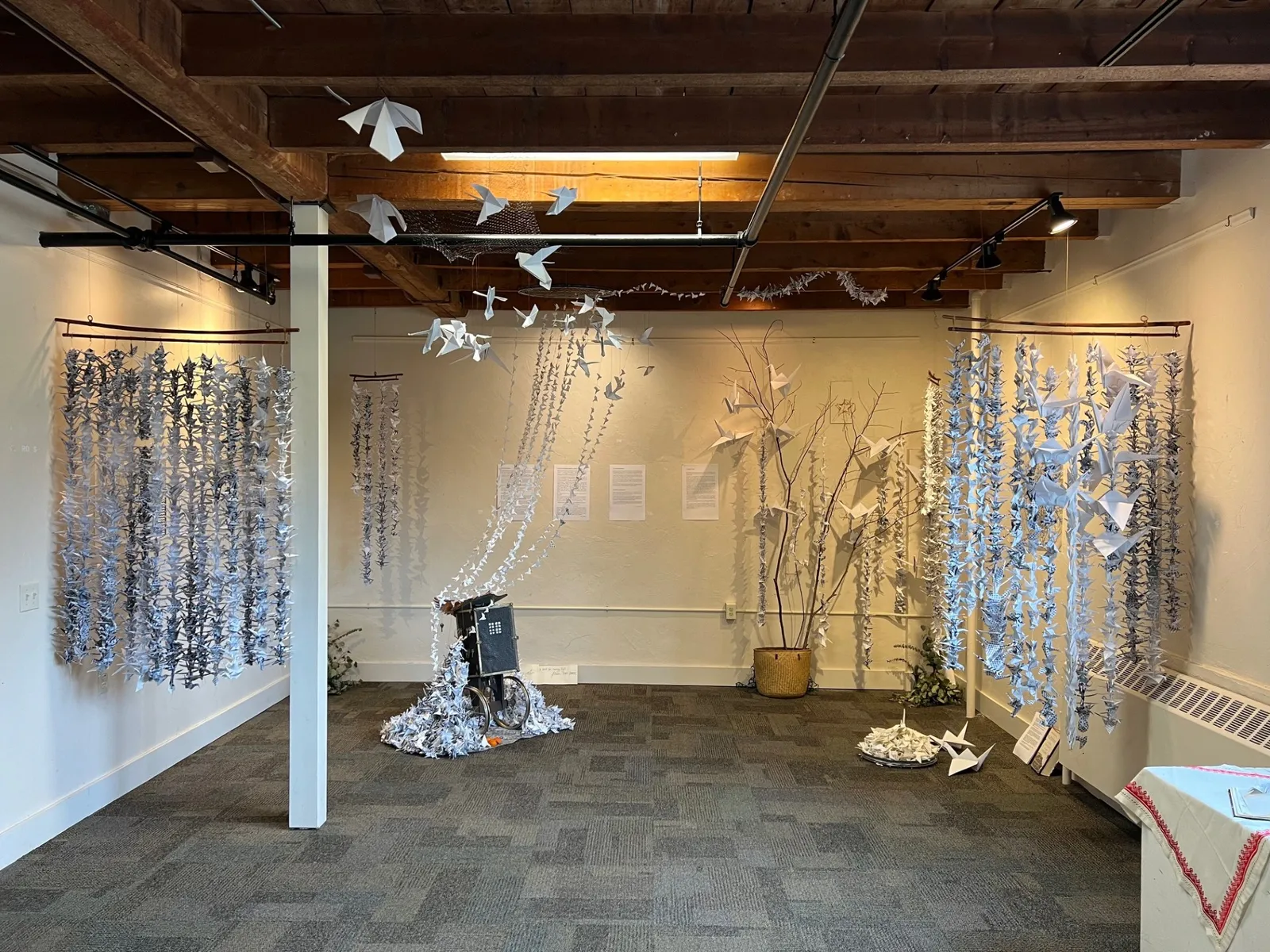
The college became a radical experiment in both education and democracy — and in the intertwining of the two, with students taking the lead on building the institution, both physically and intellectually. The inaugural catalog described “participation of students in policy making and in the performance of work” as “essential to maintenance and operation as part of the educational program.”
Goddard students designed and constructed some of the campus buildings. They also created a campus fire department, grew food, ran a switchboard, staffed the kitchen and performed other jobs around campus, according to a history of the college by Cara Hoffman, published in January 2023 in Teen Vogue. Hoffman, who went on to teach in Goddard's creative writing department, also highlighted Goddard’s founding premise as a response to the rise of fascism in the 1930s.
Financial vulnerability has also been part of Goddard’s DNA. As Goddard graduate Elle Oille-Stanforth documented in a master’s thesis that drew heavily on Goddard’s early history as well as its more turbulent recent history, the college had a rocky financial path dating back to Pitkin’s tenure. The founder eschewed asking parents for donations but often found local investors to back the institution in the nick of time.
“During his tenure as Goddard President, Pitkin was able to do the work and raise the money needed, but the school was never capable of running without someone with deep pockets to finance it, or connections to them,” Oille-Stanforth wrote.
The college continued to grow in the following decades. Into the 1960s and ‘70s, the back-to-the-land movement helped generate interest and enrollment in Goddard. Among its thousands of alumni over the years are luminaries in the arts such as actor William H. Macy, novelist Walter Mosely, playwright David Mamet, jazz saxophonist Archie Shepp, and two members of the band Phish.
While Goddard is accredited and has some features of a traditional college so it can remain so, it effectively rejects standard classroom instruction. Students spend only a week in residency per semester and complete the rest of their studies remotely.
Rather than absorbing information from instructors and assigned readings to pass tests, students direct their own learning, with faculty acting as guides and mentors. As Muller described Goddard, it is “a school with no classes, no grades, where all students are doing independent studies all the time.”
Pathways to Goddard also veer from the typical college student's story. Oille-Stanforth enrolled because Goddard acknowledged life skills she picked up while studying to be a doula at a Maine program that she left after changing career plans.
“I wrote a really long paper that had lots of details about midwifery, and they gave me 43 credits for it,” Oille-Stanforth said in an interview. “It was a big deal that that process could happen.”
Before joining the faculty, Garland attended Goddard as a student in the 1980s. It was mainly a way for Garland, who is from Norway, to secure a student visa so she could be with her partner, now wife, in the U.S. at a time when the country didn’t legally recognize same-sex partnerships.
When Garland looked around for schools, her partner, who had worked in the state at one time, said, “‘Well, there's this funny little college in Vermont that might suit you,’” Garland said.
Rowing in different directions
If you put aside its unique structure, Goddard looks on paper a lot like other small liberal arts colleges struggling from enrollment and revenue declines these days.
Its enrollment fell more than 35% from 2017 to 320 students in 2022, per federal data. In the college’s closing announcement, the board noted that Goddard was serving just 220 students — roughly a fourth of the 802 students the college enrolled in 2010 and a fraction of its nearly 2,000 students in the early 1970s.
With the enrollment drops have come financial pressure. Revenue fell more than half a million dollars short of its $7.5 million in expenses in the fiscal year ending June 30, according to its latest financials. Between 2022 and 2023, unrestricted revenues dropped 18.4%.
The college also carried $1.9 million in debt, stemming from a $2.1 million U.S. Department of Agriculture loan for a biomass-fueled heating plant. The debt is backed by the campus’s buildings.
Even with those challenges, Goddard managed to squirrel away reserves of $3 million in investments and more than half a million dollars in cash, thanks to a string of surpluses that ended in fiscal 2023. Somehow between June of last year and this April, those reserves were mostly or entirely used up.
“It's a little faster than I expected a closure to happen,” Leesa Stewart, who served as chief financial and administrative officer at Goddard between 2019 and 2023, told Higher Ed Dive. “There were cash reserves, and other things going on that would have made me think it could have gone on a little longer.”
Stewart also noted that the student count was higher when she left, which would have meant tuition revenue was also higher than when the college announced its closure.
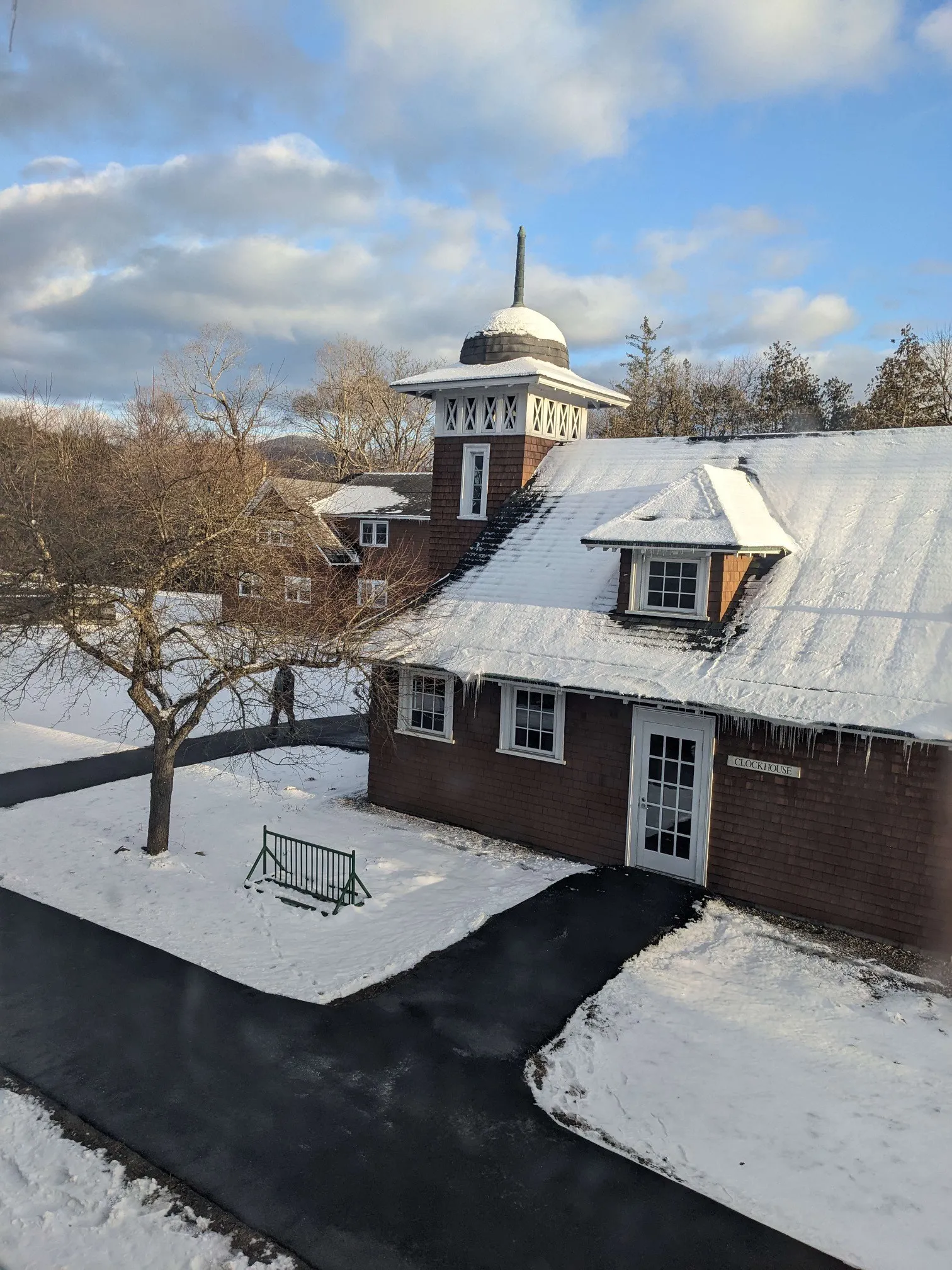
But the institution’s troubles ran much deeper than financials.
Over the decades, faculty have clashed with various incarnations of Goddard’s board and administration. Among other issues, the last several years have brought painful labor disputes, including a strike by unionized staff in 2023.
Stewart points to this as a potentially fatal factor leading to the college’s demise.
“People have to be committed to the budget and the plan and the direction,” said Stewart. “And if people are not committed, that's often where the plan fails. And I think I had a general sense that commitment was waning. When people aren't rowing the boat in the same direction, I don't think you can survive.”
With the arrival of Hocoy in mid-2021 came a state of deep alienation and mistrust between administration and nearly all other campus stakeholder groups, according to Garland, Waters, Muller and others Higher Ed Dive talked with.
A vocal contingent thought Hocoy — who previously held leadership positions at Antioch University in Seattle, Erie Community College in New York and Metropolitan Community College in Kansas City — was wrong for Goddard even before he started.
Among them was the Goddard Alumni Council — a group created at the board's behest to become the college’s official alumni association, but which never received ultimate approval, according to Oille-Stanforth, who served as the council’s press liaison. Before the interview process ended, the organization publicly denounced Hocoy’s candidacy for the presidency.
The group described Hocoy’s vision as “antithetical to [Goddard’s] mission, values, and pedagogy” and his approach to fundraising as “corporate and capitalistic.” That was the beginning of a history of tension between Hocoy and the not-exactly-official alumni group, which at one point received a cease-and-desist letter from the board’s attorneys with accusations of defamation.
Muller, as faculty, recalls becoming concerned when Hocoy as a candidate brought up mergers and acquisitions in his public interviews — suggesting that the future president might have had a merger in mind for Goddard. Hocoy also said, according to Muller, that his goal was to transform Goddard from a “commune” into an effective organization.
Oille-Stanforth wrote in her thesis that “I was distinctly put off by Dan Hocoy’s presentation.”
The council had pushed for a different candidate, a feminist scholar it considered a better fit for the college.
“We had an option. Most folks in the community wanted that option,” Oille-Stanforth told Higher Ed Dive. “So we were all very confused when it happened.”
Communication breakdown
Once he was aboard, Hocoy was seldomly seen around campus, according to faculty and others Higher Ed Dive spoke with. Muller said the president has not attended a student graduation in over a year, something others noted as well. Nor was he seen at other campus events, including lunches held during student residency periods, Oille-Stanforth said.
Muller also said the faculty council tried for at least the past year to schedule a meeting with Hocoy, but got only silence, notes suggesting dates that didn’t work, or promises of follow-ups that never came.
Garland described a “firewall” Hocoy created between leadership and the Goddard community.
“There has been a complete breakdown of communication and information between the president and the community ever since he came on board,” she said.
As the college’s finance chief, Stewart said she communicated with Hocoy much more than faculty did, meeting with him weekly.
“It is true that he wasn't on campus a lot,” Stewart said. “His vision was more to have the provost and the CFAO [chief financial and administrative officer] handling internal operations so that he could be externally facing.”
Adding to the gulf between administration and the faculty rank and file was turnover in some top administrative posts. Then, starting roughly a year ago, many administrative functions — including finance, human resources, admissions and others — were outsourced to a third party, Core Education, a public benefit corporation based in Northern Virginia.
“We were no longer dealing with humans who we had any sort of human relationship with,” Muller said. “It was clear they felt like they answered to the president and not to the college as a community.”
Core Education CEO Kamalika Sandell said there was not enough time for the firm’s staff to fully get to know campus, given that the college lacked key finance personnel when it began working with Core in last year’s second quarter.
“To give them stability — that was our role,” Sandell said. “And [for] my staff to keep our heads down, do the ops pieces that they had asked us to do, fully aware of the challenges of the campus.
Did Goddard have to close?
As the college winds down, some are still trying to save Goddard’s legacy.
One group, Remake Goddard, aims to keep the college’s pedagogical model alive. Muller, who is involved with Remake Goddard, said the group is filing for nonprofit status
“Saving what worked and replacing what went wrong in the Goddard College of the past, we will ensure openness, transparency, inclusiveness, equity, and justice in all the operations of the new college,” Remake Goddard says on its website.
Another group, Cooperation Vermont, has been trying to buy the college’s 117-acre campus to build a community production center that could contain an educational component, but it has struggled to get time with and serious consideration from Goddard’s leadership, according to Michelle Eddleman McCormick, director of the organization.
Local media have reported that the campus property is under contract with an undisclosed bidder, but Cooperation Vermont is still pressing its case.
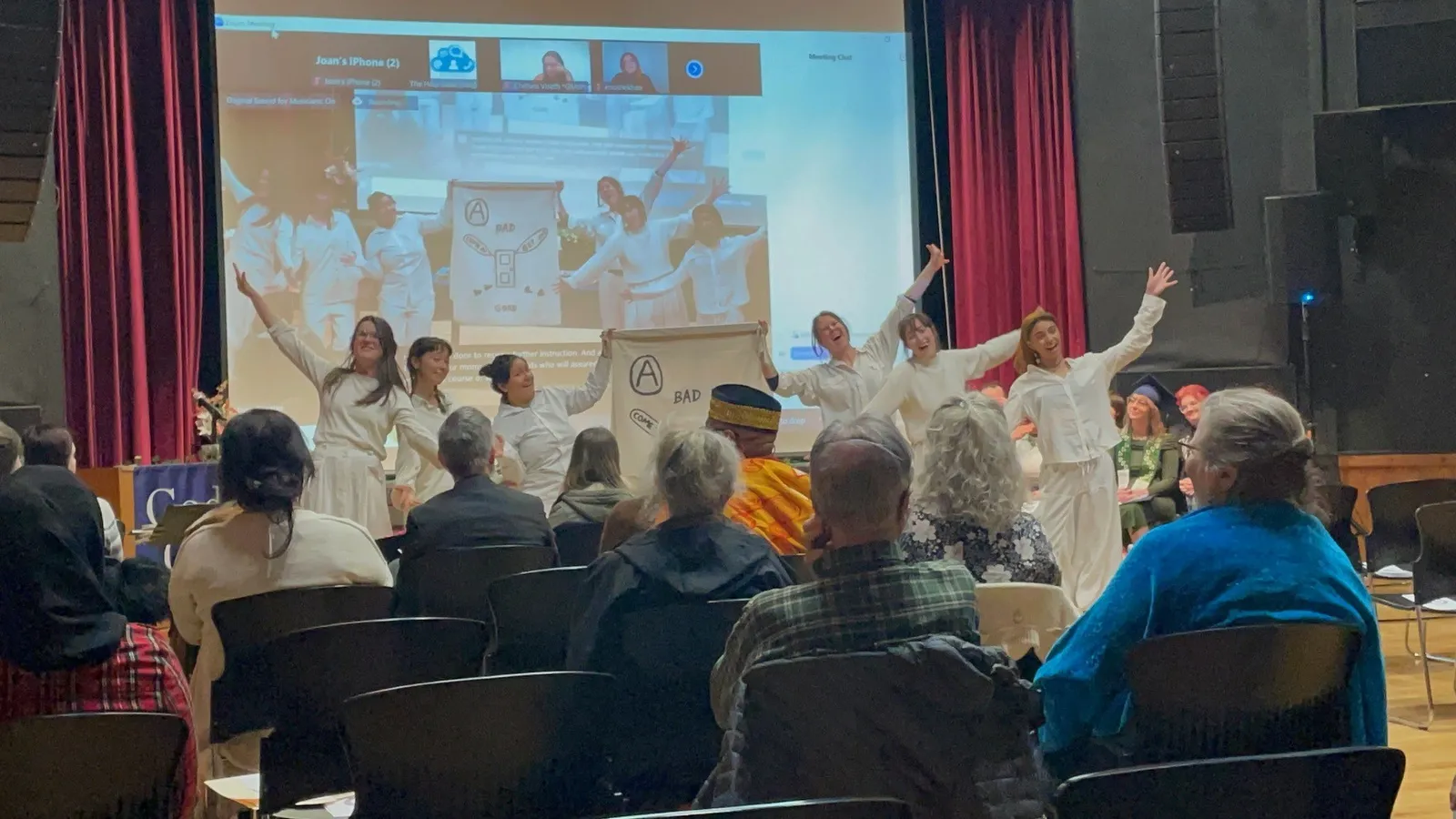
Whether the college’s spirit, model and campus will be preserved is a question for the future. For the moment, the more pressing question may be: Did Goddard have to close?
According to the board’s April 9 announcement, it had no choice in the immediate term.
“With declining enrollment and financial insolvency looming, the Board was left with no other option,” Mark Jones, chair of Goddard’s board, said in a statement at the time. “Our hearts are broken.”
In a May 30 statement, the Goddard faculty council called the board’s statement a “false narrative.”
“The closure is a result of incompetence, mismanagement, ineptness and benign neglect,” the council said. “It is a failure of leadership”
None of the faculty or alumni Higher Ed Dive spoke with saw Goddard’s fate as inevitable. Had different decisions been made over the past decade, the trajectory might also have been different, they said.
Many smaller colleges facing dwindling enrollment and financial pressures hold out hope for an enrollment bump. That’s a tough proposition amid a declining base of traditional college-aged student prospects and increasing competition among small institutions with limited resources.
But Goddard presented a good case for filling a niche. Its pedagogy and approach to higher education are distinctly different from just about every other institution in the U.S.
Still, how many people outside of Vermont even know about Goddard?
“We haven't had a functioning marketing program,” Garland said, pointing also to “dysfunctional” admissions. That situation left the college relying on word of mouth to carry forth its message.
“There’s been an incredible failure in terms of both marketing Goddard and also any form of fundraising,” Muller said. “If the college had put effort into marketing or fundraising or both, the financial situation we’ve been in could have been avoided.”
To change course takes resources, though. “They didn't necessarily have a lot of runway to really do anything like a turnaround,” Sandell said, pointing to the need to both stabilize operations and develop a growth plan.
In Stewart’s view, the college might have bolstered its finances by renting out unused campus buildings, finding other alternative revenue sources, and boosting its endowment through deeper relationships with alumni.
The former finance chief also said, “We would have needed to take a real look at the students and projections for the future — and how and what the students were looking for from Goddard.”
However, to be successful, any turnaround at Goddard would almost certainly have needed buy-in — which would have required stronger relationships throughout.
“The thing about a small college is even if you have a vision, you have to get the community behind that vision,” Stewart said. “By the time I left, there was a lot of conflict within the community. And I don't think there was unity in any vision.”


